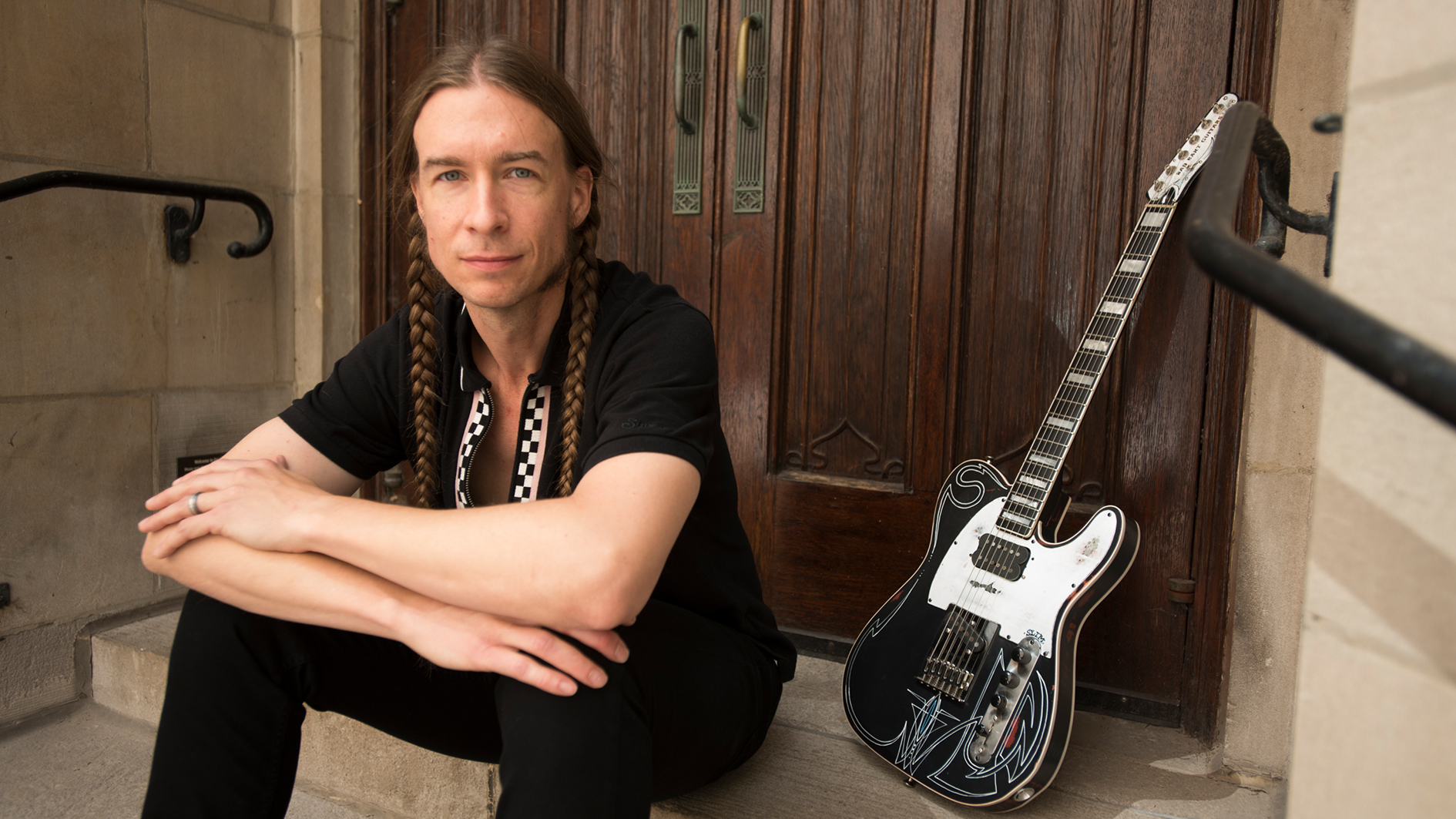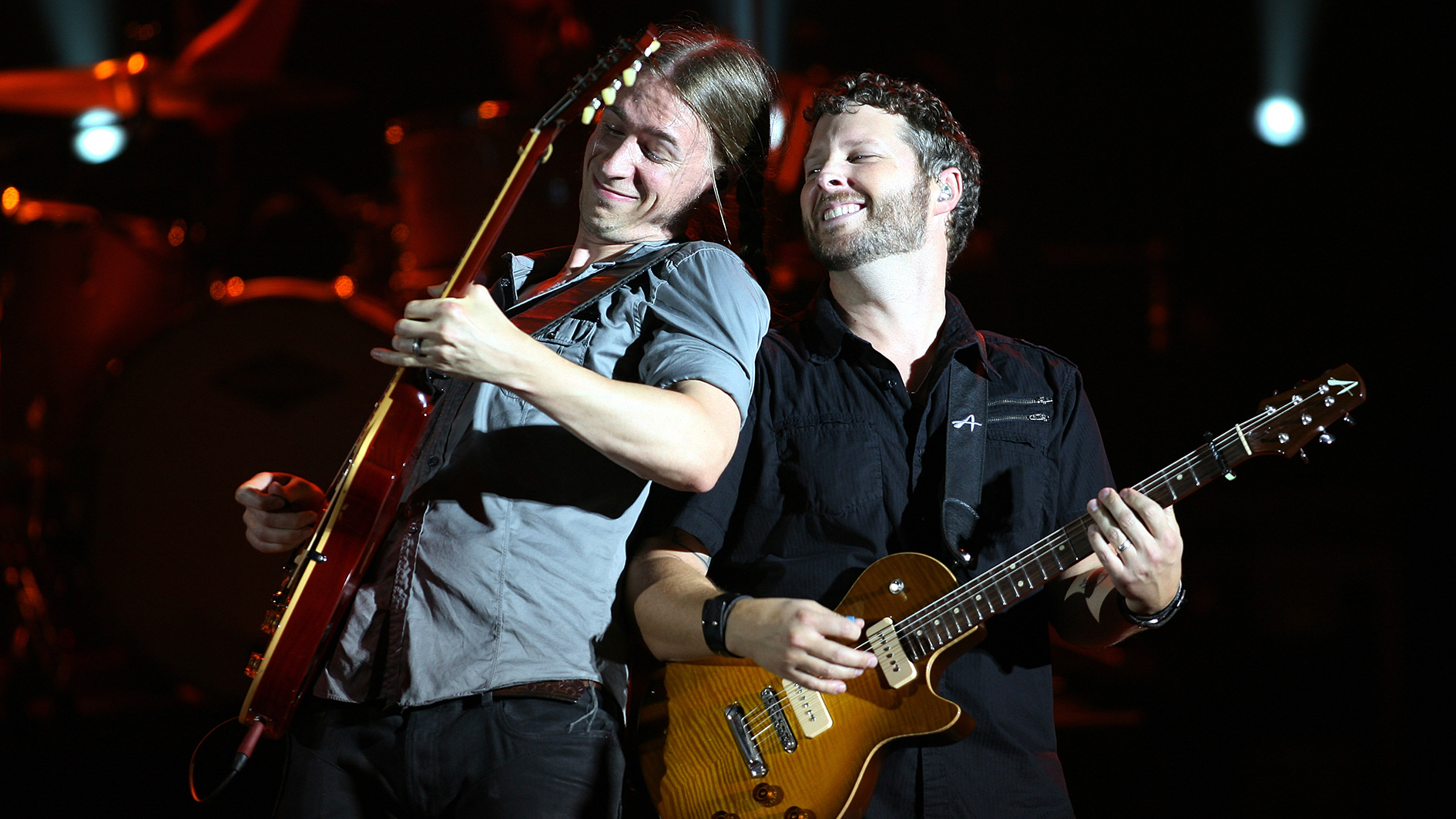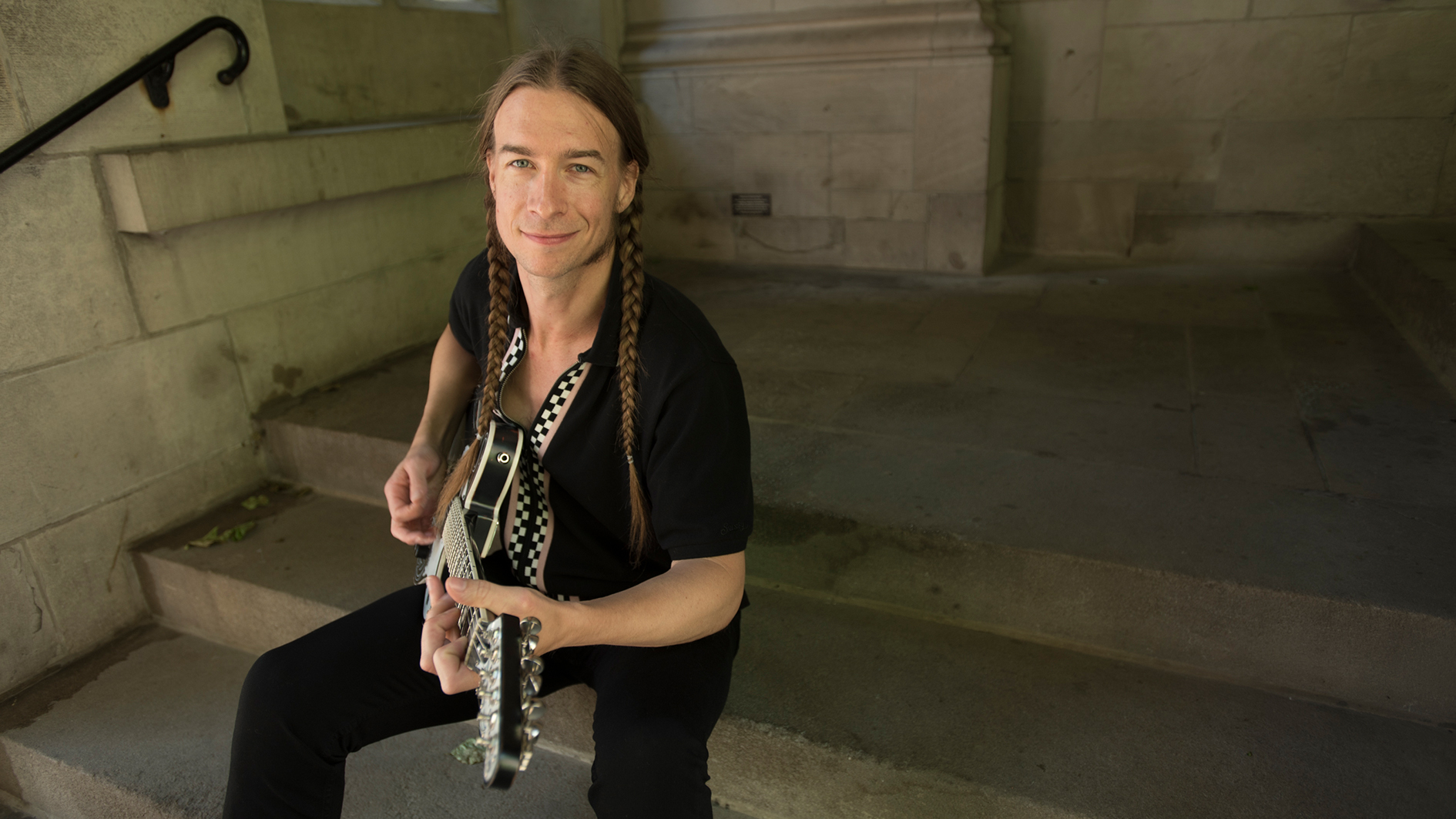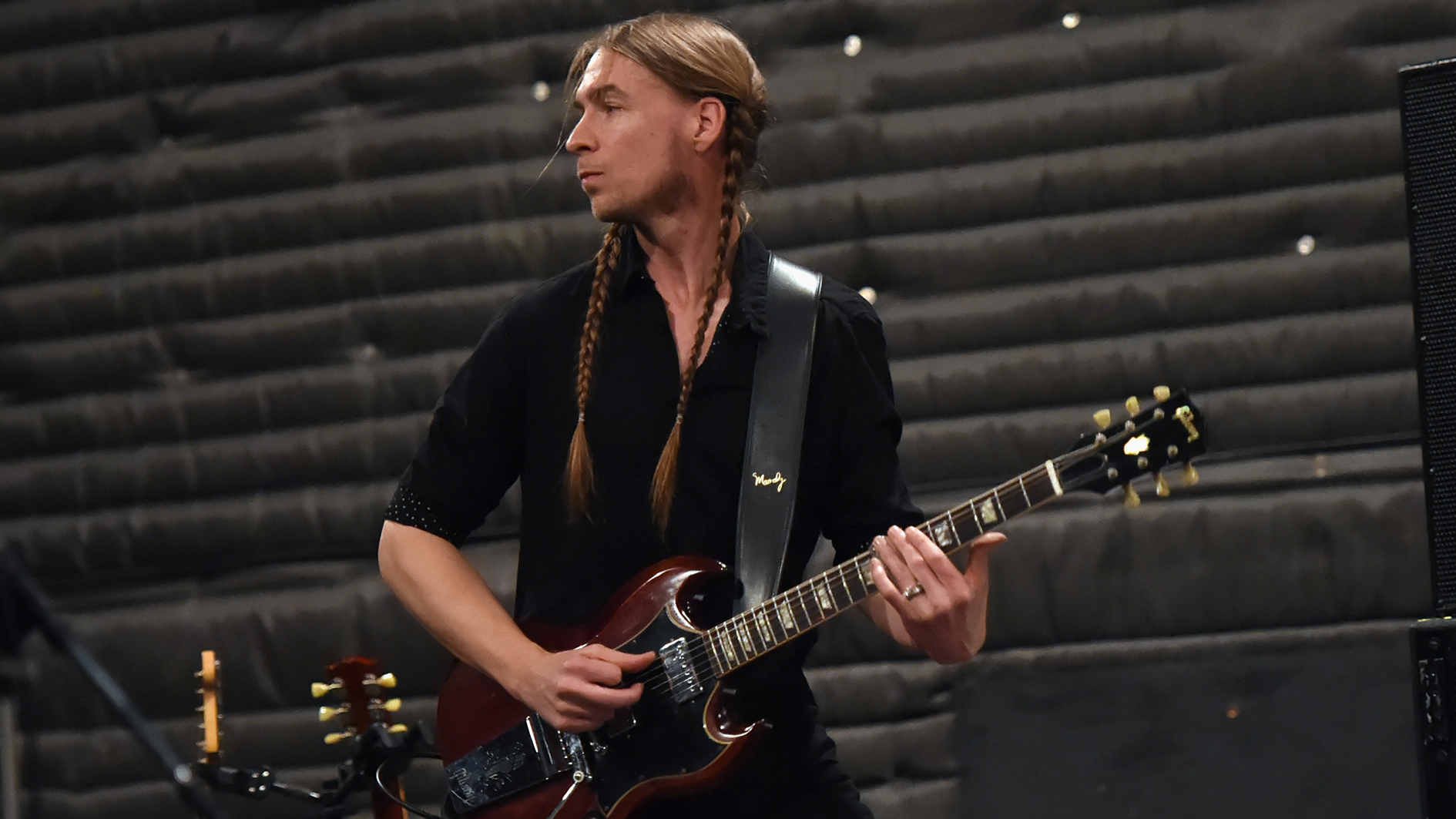Lady Antebellum guitarist Slim Gambill: "You have to have a sense of rhythm to play a good guitar solo"
The American guitarist talks touring with the multi-platinum trio, his debut solo album, and the two concepts that changed his playing

When Jason 'Slim' Gambill moved to Nashville, he did so with a wealth of experience and at the urging of a musician who was launching a new band. At the time, Gambill was playing guitar for Josh Kelley; the musician luring him away was Kelley’s brother Charles, and the band was Lady Antebellum, now a multi-platinum, seven-time Grammy-winning country music super-group.
Gambill, a guitarist, producer, and songwriter, studied jazz guitar at the University of Southern California, is an accomplished session player and sideman, performed in the house band on NBC’s late-night program Last Call with Carson Daly, and spent two years in Josh Kelley’s touring band after tracking guitars on the singer’s 2005 album, Almost Honest.
He packed his things, made a cross-country drive, and arrived in Nashville on April 1, 2007. Three months later, on his 30th birthday, he was in the studio with Lady Antebellum, which includes Kelley, Dave Haywood, and Hillary Scott, cutting their first album.
Earlier this year, he released his debut solo album, Fake Jazz & Theme Songs, and quickly took it to the stage, sometimes on stretches of dates with his own band and sometimes on the fly, booking dates on off days for Lady A and recruiting, rehearsing, and performing with local musicians at each stop.
With 18 million albums sold, plus a string of Number 1 hits, Lady Antebellum no longer need to maintain a grueling year-round touring schedule. This gives Gambill the opportunity to execute a slow and steady build for his project while enjoying valued family time.
“I’m not trying to be a road dog at this stage of the game,” he says. “If I was looking to jump in a van, disappear for a few months, and just grind it out, I guess I could do that. But that's not where I'm at. I have two little kids, and I love having time with them, just being a dad. When I get to go off and make music, that's a big bonus; that's what I get to do for a living.
“Lady A is at a point where we're topping off at 50 or 55 shows a year, so it enables me to be home with my kids a lot and still go out and play my jazz shows and develop that.
All the latest guitar news, interviews, lessons, reviews, deals and more, direct to your inbox!
Some of the tunes [on Lady Antebellum's Ocean] just rip your heart out. They bared their souls. They weren't trying to chase whatever sound is on the radio
"Hopefully it will become its own living, breathing entity, so that when Lady A is off, I can wrangle 20 or 25 jazz shows, have a great time doing them, and still get to stay home with my family. The ultimate goal is having that balance. So far, so good. It's pointing in that direction really well.”
When Gambill spoke to Guitar World, he was in the midst of another stretch of solo dates while looking ahead to Lady Antebellum’s 2020 tour in support of their latest and seventh album, Ocean, produced by Dann Huff. “There's such honesty on this record,” he says.

“Some of the tunes just rip your heart out. They bared their souls. They weren't trying to chase whatever sound is on the radio. They wrote about what they've experienced the last few years, and they put it all out there. It's a great, great album.”
You play lead guitar for Lady Antebellum and obviously on your own album, and because everyone is talking about that, let’s start by talking about your rhythm playing. Let's talk about groove and pocket and why every guitarist should know how to play rhythm.
"That's a great thing to talk about, because I firmly believe that what has generated the most work and the most gigs in my world is the ability to hold down the fort, especially as a sideman.
"When I'm doing my backup musician thing, which is 95 percent of what I do, that's what you're doing. There aren’t a lot of guitar solos going on in modern popular music, so at the end of the day, it is all about your ability to hold it down and come up with creative chord voicings and the shimmery background parts that everybody's after. And I have fun doing it.
When you first start playing guitar, you hear those screaming guitar solos and you want to do that. I still want to do that. I still love doing that. But we're not in Van Halen, you know?
"When you get those opportunities to step out and play a solo, cool, but a solo has got to be in time. You have to have a sense of rhythm to play a good guitar solo. In the case of a sideman gig, even when you're playing a solo, it’s melodic, it’s rhythmic, and it often revolves around the vocal melodies. So yeah, it's all about pocket and melodies and tone.
"When you first start playing guitar, you hear those screaming guitar solos and you want to do that. I still want to do that. I still love doing that. But we're not in Van Halen, you know? That's not a thing that comes up so much anymore. So the thing that’s going to get somebody working is being able to play with a band and in the pocket."
How did you cultivate that skill?
"It definitely comes from playing with rhythm sections. There's the argument that one should learn to play to a click. When I have guitar students, I try to get them to play to a click. It’s really difficult, so it's a skill that we all have to gradually cultivate. But that’s for timekeeping.
"For rhythm and groove, it comes down to playing with a rhythm section, and playing with other people, because it gets you into that spot where you have to lock in with other musicians, and that's where the groove comes from. It's not just from you as an individual; it's from the way you lock in with other people.
"And if the timekeeping pushes and pulls - which it invariably will, if you're not playing to a click track - as long as you're pushing and pulling together, it can feel great. That's where the groove comes in, as opposed to rigid timekeeping ability.

"In high school I had a band with some buddies called The Awkward Stage, and basically we made stuff up. We were really heavy into P-Funk, Primus, Cream - we loved classic rock and classic funk and Primus. We would get together and jam and just get grooves going. I don't know how good our timekeeping was, but I know that our pocket got to be really great.
"And so when I moved on to other bands and stuff, I knew how to play with other people. Sitting in your room practicing or even playing along to records - I don't think that’s going to give you the pocket. Jamming with people is where that evolves, at least in my case. That's where it came from."
In one of the podcasts I listened to, you cited George Benson - the embodiment of smooth guitar and groove - as one of your biggest influences.
"The slickest dude that ever walked the Earth!"
How did you discover his music and what have you learned from him?
"When I was 13 or 14 and living in Colorado Springs, I would ride my bike to the public library because they had LPs that you could check out. I was really into guitar and I saw this LP called Breezin’. I didn't know who George Benson was, because I had never been exposed to his music. There was no Internet, so I wasn’t going to stumble upon a George Benson track.
"But there was this guy who looked like Billy Dee Williams and he played guitar, so I decided to check it out. I put it on and there was a 'Holy crap!' factor, because at that time the stuff I was hearing was a lot of hair metal and shredders playing all the notes.
"The thing about George Benson is he would be so tasty and smooth and melodic, but then he would go on these blazing runs, but it was clean tone and crisp and perfect, and then he'd go right back into that deep pocket.
"That combination really grabbed my ear. He would play the barrage of notes, because that's what was going on at the time for guitar players, and I was like, 'Wow, this guy can shred,' but then, oh my gosh, the phrasing and note choices were just otherworldly, and his delivery, the pocket in his solos, was so locked in and felt so great. He would make it just sit in with the bass, the drums, the keys, and a rhythm guitar, and it felt so good.
There were two things that affected my musicality more than anything else. The first was learning to read music, standard notation. The second was the Nashville number system
"That's the thing about him - the memorable melodies he was playing, and it sat in a deep, deep place that very few people ever get to. Just recently I've gotten back into Breezin’. I've been listening to it a lot, and it's one of those records that is still unattainable for me. I’m like, 'Man, one of these days I’m going to sit down and learn some of those licks,” but I'm still intimidated by that."
You studied music at USC (University of Southern California), had experience transcribing music, and moved into a music scene that uses its own number system for charts. How was that learning curve?
"I tell people that there are two things that affected my musicality more than anything else as an absolute game changer. The first was learning to read music, standard notation. The second was the Nashville number system.
"The theory behind the number system was nothing new to me. I understood chord relationships, I understood scales, where it comes from, what the numbers represent.
"What was new to me is when I first got in the studio and guys were making charts without an instrument in their hands. They would listen to a record and write down the numbers completely by ear. And I’m thinking, 'How in the world do you do that?'
"I got called for a couple of cover gigs in Nashville, and I thought, 'I guess I should learn how to do these charts.' I sat down with this stack of fifty tunes, all of them classic country, and I would do a number chart, because I learned how it was structured on the paper, and then go back and try to play it, and see what was right and what was wrong.
"The learning curve was pretty quick when I attacked it that way. I started to realize what different chord relationships sounded like. What happens with the number system is it expands your ear to hear chord relationships, rather than just perceive chord relationships.
"Different chords within context take on different qualities, like you could hear there's this specific sound to a five chord, a flat seven chord, a major three chord, or a minor four chord. Some are more obvious than others, but it expanded my ear to where I could get onstage, someone could call a tune I had never played before, but if I had heard it, those chord relationships were in my ear, and I would know what was coming and be able to play it.
Playing as a backup musician is all about serving the song. It's serving someone else's music
"So yeah, the number system blew my mind - again, not because of the theory, because I know what a one chord and a two minor chord are, I've known that for 20 years, but being able to hear what a two minor chord sounds like in order to identify it as such was a big game changer for me. I had to learn that when I got there, and it’s a super-cool thing."
On that note, how are the two sides of your playing - Lady A and Fake Jazz - different?
"The two sides are pretty distinct. The world of Lady A is… let me put it this way. Playing as a backup musician is all about serving the song. It's serving someone else's music.
"It's for me to serve their voices, their records, their songs, and I take great pride in serving their music well, as I think I do. I am part of the ensemble, and I am there to not only reproduce what they do, but also to enhance it.
"I think there's a lot of confusion, when younger musicians get called for a gig, of 'I need to play this exactly like the record.' There are parts that you need to play that way, and to me, those parts are obvious. But when there's three or four of you in the backup band and the record has dozens of tracks going, that's when you need to enhance it. That's when you need to make the decisions tone-wise and parts-wise to fill it out and make it its own live entity.

"That's something I think we really do well in Lady A's backup band. We figure out which parts need to be played and we make sure those are in there, but we recognize the need to make it a bigger live experience than what's on the record.
"On the record, you can get away with the amount of transparency and isolation that you hear within the parts. When we play it live, we need to kick everyone's ass.
"With the Fake Jazz project, I'm there to serve my own interests. That's when I get to air it out. That's when I get to do whatever I feel like doing, the music that’s built up inside of me the rest of the time. It's an outlet and it's the truest expression of me as a musician, the music that naturally comes out of me.
"Obviously, the record is all over the map, and that's indicative of where I'm coming from. I like playing all that stuff. Live, it goes into full-on jam band territory. The solos are extended. There’s a lot of improvisation, a lot of seeing where it goes, which is where I started.
"My first band, The Awkward Stage, that I talked about earlier, we knew maybe two or three tunes, everything we did was improvised, and that's something I've always had a passion for. This is my chance to do that, and it’s a lot of fun."
Alison Richter is a seasoned journalist who interviews musicians, producers, engineers, and other industry professionals, and covers mental health issues for GuitarWorld.com. Writing credits include a wide range of publications, including GuitarWorld.com, MusicRadar.com, Bass Player, TNAG Connoisseur, Reverb, Music Industry News, Acoustic, Drummer, Guitar.com, Gearphoria, She Shreds, Guitar Girl, and Collectible Guitar.
